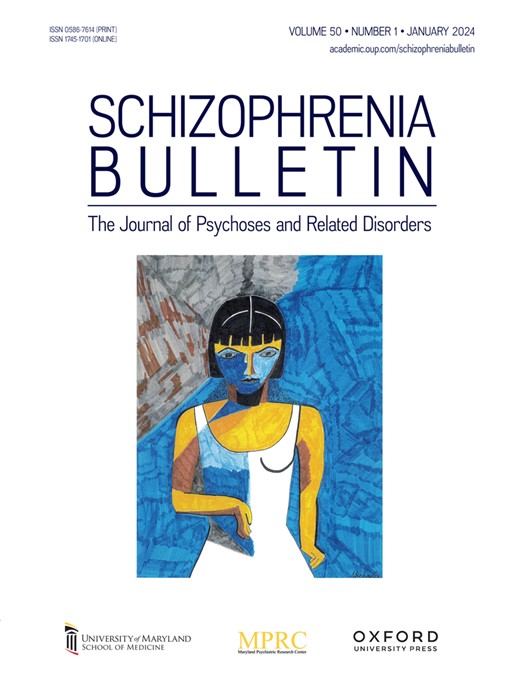Peripheral Microvascular and Cerebral White Matter Dysfunction in Schizophrenia: Implications of a Body-Brain Endothelial Pathophysiology
IF 5.3
1区 医学
Q1 PSYCHIATRY
引用次数: 0
Abstract
Background and Hypothesis Schizophrenia spectrum disorder (SSD) is a chronic neuropsychiatric illness accompanied by significant brain structural and functional abnormalities and higher rate of cardio- and cerebrovascular comorbidities. We hypothesized that genetic and environmental risk factors that led to SSD act throughout the body and demonstrated the association between lower integrity of peripheral vascular endothelium and white matter (WM) microstructure. Study Design Microvascular endothelial function was evaluated using brachial artery post-occlusive reactive hyperemia (PORH), in which endothelial responses are measured under reduced blood flow and after blood flow is restored. White matter microstructure was assessed by multi-shell diffusion tensor imaging in n = 48 healthy controls (HCs) and n = 46 SSD. Study Results Patients showed significantly lower PORH (F1,90 = 5.31, P = .02) effect and lower whole-brain fractional anisotropy (FA) values by diffusion imaging (F1,84 = 7.46, P = .008) with a group × post-occlusion time interaction effect (F3,90 = 4.58, P = .02). The PORH and whole-brain FA were significantly correlated in the full sample (r = 0.28, P = .01) and in SSD (r = 0.4, P = .008) separately, but not HC (r = 0.18, P = .28). Conclusions This study demonstrated, for the first time, significantly lower integrity of vascular endothelium in participants with SSD and showed that it is associated with WM microstructural abnormalities. Together, these findings support the need for a more holistic, body-brain approach to study the pathophysiology of SSD.求助全文
约1分钟内获得全文
求助全文
来源期刊

Schizophrenia Bulletin
医学-精神病学
CiteScore
11.40
自引率
6.10%
发文量
163
审稿时长
4-8 weeks
期刊介绍:
Schizophrenia Bulletin seeks to review recent developments and empirically based hypotheses regarding the etiology and treatment of schizophrenia. We view the field as broad and deep, and will publish new knowledge ranging from the molecular basis to social and cultural factors. We will give new emphasis to translational reports which simultaneously highlight basic neurobiological mechanisms and clinical manifestations. Some of the Bulletin content is invited as special features or manuscripts organized as a theme by special guest editors. Most pages of the Bulletin are devoted to unsolicited manuscripts of high quality that report original data or where we can provide a special venue for a major study or workshop report. Supplement issues are sometimes provided for manuscripts reporting from a recent conference.
 求助内容:
求助内容: 应助结果提醒方式:
应助结果提醒方式:


